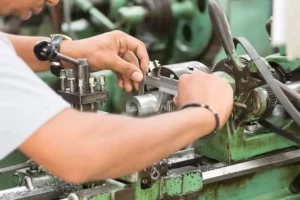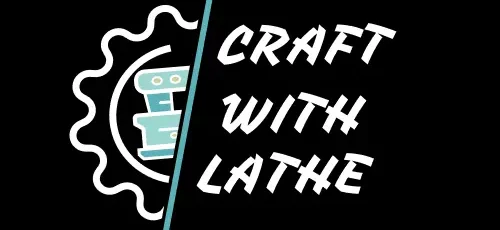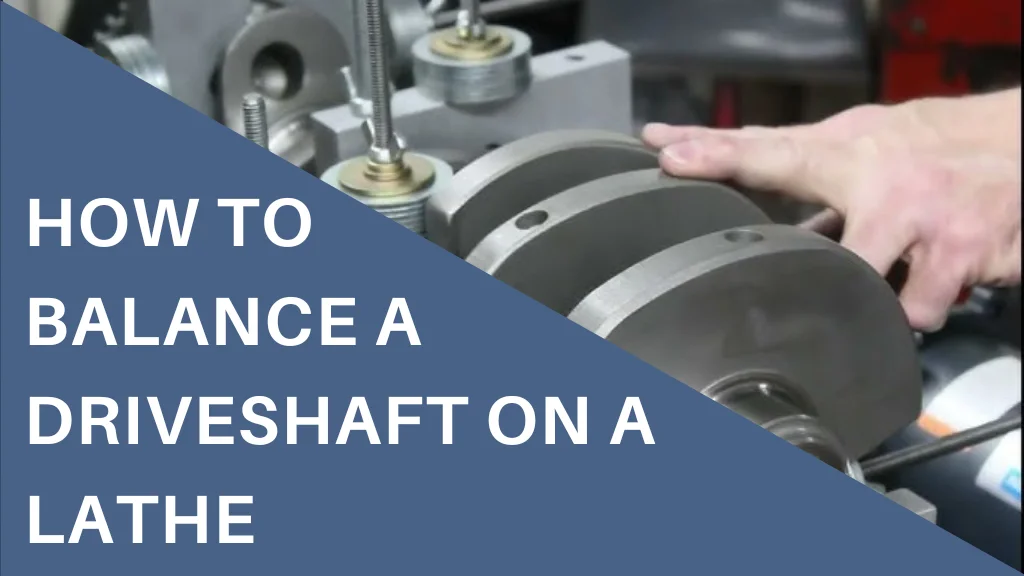How to balance a driveshaft on a lathe is a pivotal step to ensure smooth and vibration-free operation. While I can not give you a composition directly, I can offer you a step-by-step companion on how to balance a driveshaft on a lathe.
How to Balance a driveshaft on a Lathe?
Technicians place the entire driveshaft assembly—including the slip yoke, U-joints, and flanges—on a balancing machine to balance it as one unit with the lathe and vehicle. A professional performs this process to ensure that the shaft operates smoothly and remains within acceptable tolerances along the tube. Using a dial indicator, the technician checks the shaft’s alignment and roundness with high precision. This process is essential for reducing vibration and improving vehicle performance.
Tools and Equipment You Will Need
- Lathe
- Precision dimension tools( micrometer, calipers)
- Weights for balancing( generally, small essence washers)
- Sandpaper or a train
- Safety outfit( gloves, safety spectacles)
- Step- by- Step companion
How to Balance a Driveshaft on a Lathe: Steps

Balancing a driveshaft on a lathe involves a series of steps to ensure that the weight distribution is even, minimizing vibrations during operation. Here is a general guide on how to balance a driveshaft on a lathe:
Note: It’s important to follow the specific instructions and safety guidelines provided by the lathe and balancing equipment manufacturers.
-
-
Inspect the Driveshaft:
- Before starting the balancing process, carefully inspect the driveshaft for any visible damage, such as bends, dents, or other irregularities. Replace or repair any damaged components.
-
Prepare the Lathe:
- Ensure that the lathe is set up and calibrated properly. Install the necessary accessories, including the mandrel that matches the diameter of the driveshaft.
-
Mount the Driveshaft:
- Securely mount the driveshaft on the lathe using the mandrel. Make sure it is centered and properly secured to avoid any wobbling during rotation.
-
Measure Initial Imbalance:
- Use a vibration measurement tool or sensor to determine the initial imbalance of the driveshaft. This will provide information on where weight needs to be added or removed for proper balancing.
-
Mark the Imbalance:
- Mark the areas on the driveshaft where additional weight is required. These marks will guide you in the placement of counterweights.
-
Calculate Counterweight Amount:
- Based on the imbalance measurements, calculate the amount of weight needed to counterbalance each marked area. One can do this using balancing equations or specialized software.
- Based on the imbalance measurements, calculate the amount of weight needed to counterbalance each marked area. One can do this using balancing equations or specialized software.
-
Attach Counterweights:
- Attach counterweights to the driveshaft at the marked locations. These counterweights can be in the form of bolt-on weights or adhesive weights.
-
Re-Measure and Adjust:
- After attaching the counterweights, re-measure the imbalance using the vibration measurement tool. Fine-tune the balance by adjusting the position and amount of the counterweights until the desired balance is achieved.
-
Check Runout:
- Check for runout, which is the lateral movement or deviation from a true circular path, on the driveshaft. Minimize runout by adjusting the setup or repositioning the driveshaft if necessary.
-
Verify Balance:
- Rotate the driveshaft again and re-measure the vibrations. Ensure that the vibrations are within acceptable limits and that the driveshaft is balanced.
-
Final Inspection:
- Technicians visually inspect the driveshaft to confirm that all components are securely fastened and free of any issues. Confirm that the balancing process has been successful.
-
Document the Balancing Process:
- Keep records of the balancing process, including the initial imbalance measurements, counterweight calculations, and final adjustments. This documentation can be useful for future reference and maintenance.
-
How is a driveshaft balanced on a Vehicle?

- Technicians can balance a driveshaft without a lathe, but they consider using a lathe the most precise and effective method
- The professional places the driveshaft, as a single unit including the slip yoke, U-joints, and flanges, on a balancing machine.
- A professional will use a dial index to ensure that the shaft is within 010 ” down the tube.
- Technicians rotate the shaft at speeds of up to 3300 RPM. As it spins, the machine analyses weight distribution along the driveshaft and calculates the exact weight corrections needed to bring the shaft within acceptable tolerance. This process ensures smoother performance, minimizes vibrations, enhances vehicle stability, and prolongs the lifespan of both the driveshaft and connected components
- After the balancing machine identifies the necessary corrections, the professional balances the driveshaft by welding the appropriate weights to the correct spots on the shaft.
Can I balance a driveshaft without a lathe?
You can balance a driveshaft without using a lathe, but technicians consider using a lathe the most precise and effective method. Alternative techniques rely on trial and error, where you add weights to the driveshaft and check for balance through repeated test runs. However, a lathe offers a more accurate and controlled approach, reducing guesswork. This makes it the preferred method for achieving the best results in driveshaft balancing.
Conclusion
How to balance a driveshaft on a lathe can be a precise and time-consuming process, so tolerance and attention to detail are essential. However, it’s a good idea to seek the backing of a professional machinist or automotive technician who has experience with driveshaft balancing, if you need more confidence in your capability to balance a driveshaft on your own.
FAQ’s
Why is it important to balance a driveshaft?
Balancing a driveshaft is essential to ensure smooth and vibration-free operation in a vehicle. When a driveshaft is out of balance, it can cause conspicuous vibration, which not only affects ride comfort but also leads to accelerated wear and tear on various parts, including the universal joints, transmission, and differential, ultimately reducing the overall lifespan of these critical components.
How can I identify the heavy spot on a driveshaft?
To identify the heavy spot on a driveshaft, follow this way
- Mount the driveshaft on the lathe and rotate it at a low velocity.
- Observe the driveshaft for clunking or vibration.
What equipment do you need for balancing a driveshaft on a lathe?
You will need a lathe equipped with the right accessories for balancing, including a mandrel that matches the driveshaft’s diameter, counterbalancing weights, and a vibration measurement tool. These tools help ensure accurate alignment and smooth operation of the driveshaft.




